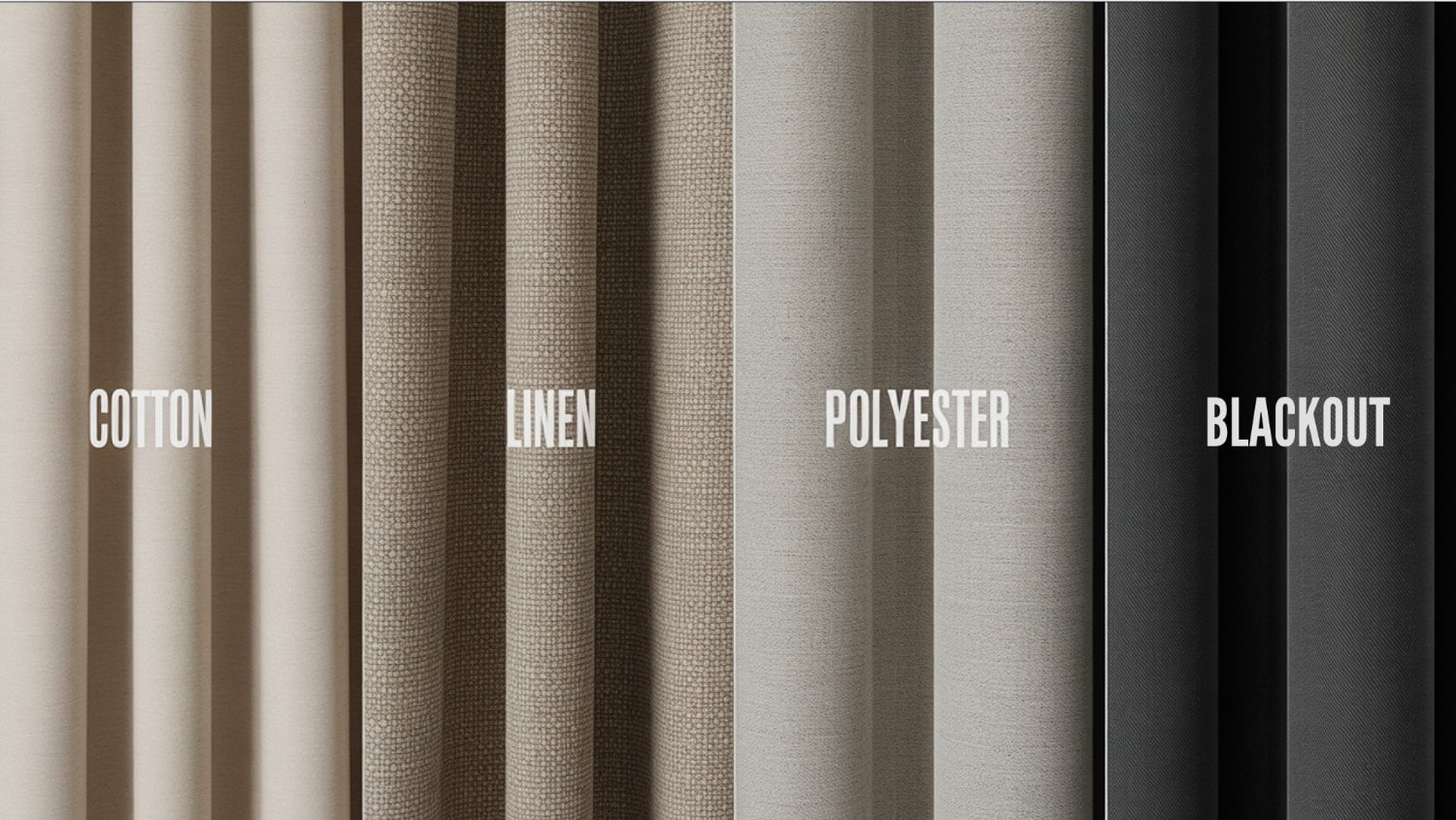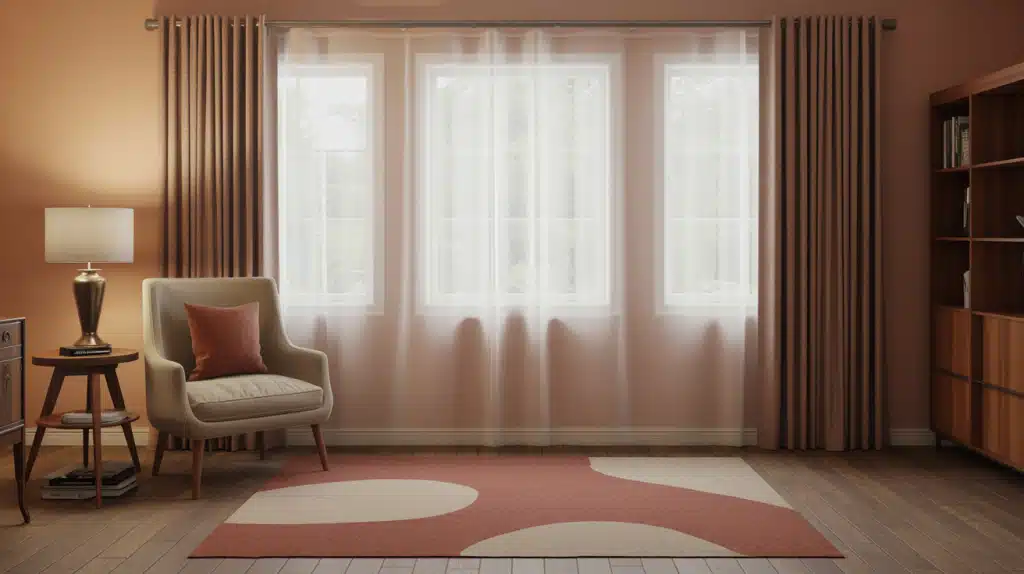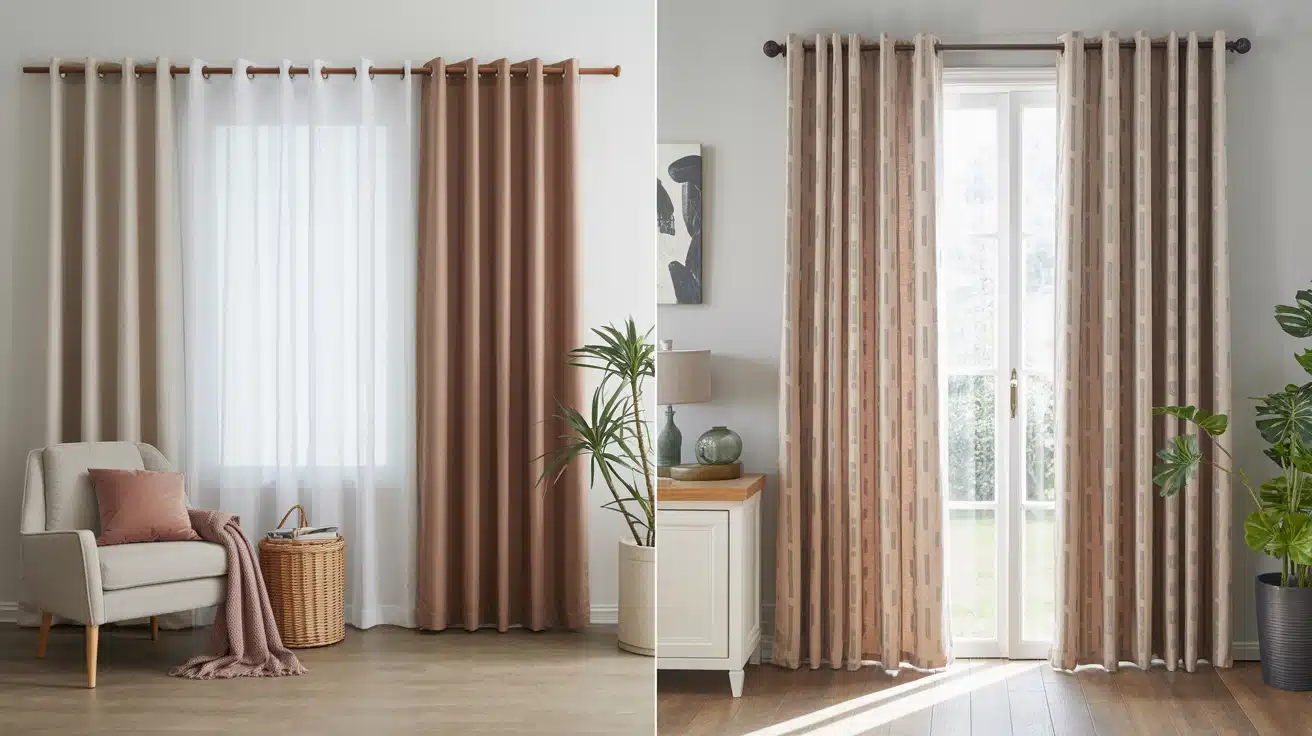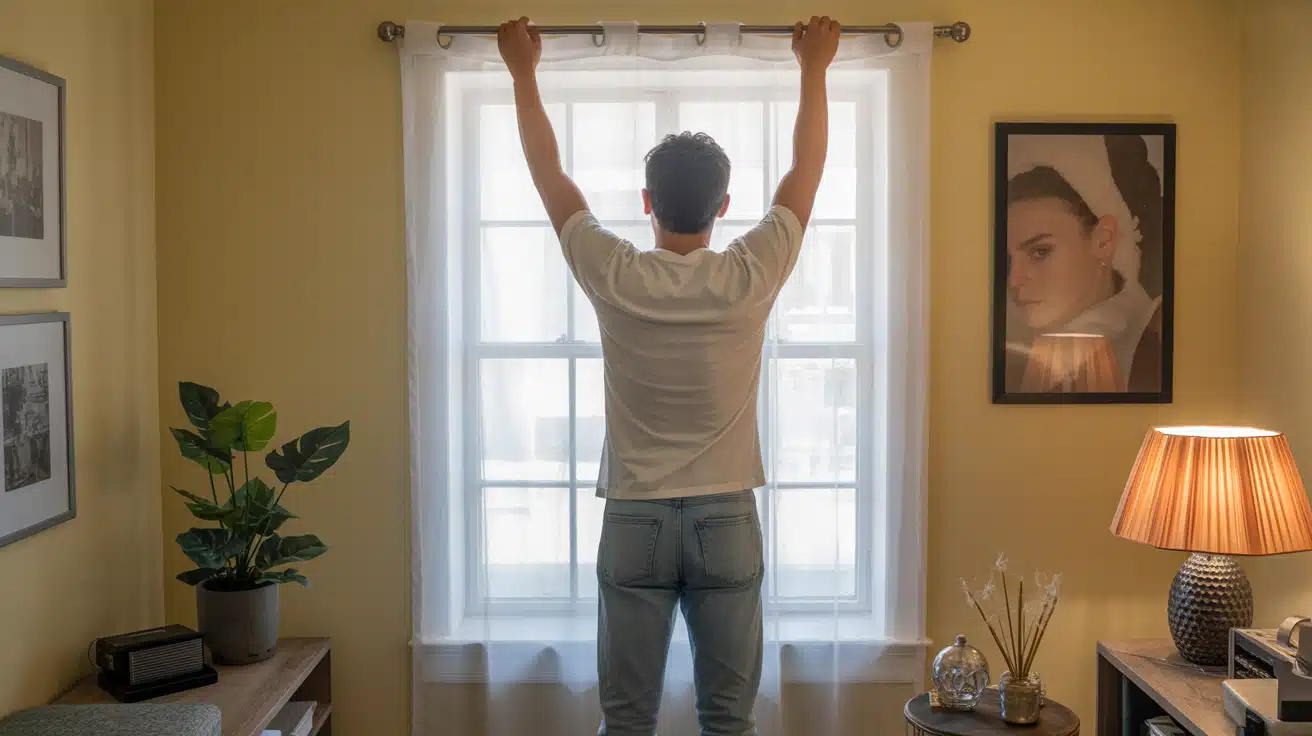Picking the perfect curtains shouldn’t feel like rocket science, yet many people find themselves staring at endless fabric swatches, feeling completely overwhelmed.
The truth is, choosing curtains becomes much easier when you know what questions to ask and what factors actually matter.
Whether you’re moving into a new place or just tired of looking at those old, faded panels, this guide breaks down everything you need to know about selecting curtains that look amazing and work perfectly for your lifestyle.
How to Choose Curtains Based on Room Function
Before falling in love with a particular fabric or color, take a step back and consider how you actually use each room.
Your living room probably needs curtains that look good both when open and closed, since you spend a lot of time there.
Bedrooms are different – here you want serious light-blocking power for better sleep. Kitchens and bathrooms need fabrics that can handle moisture and frequent washing.
Think about your daily routine too.
Do you work night shifts and sleep during the day? Blackout curtains become essential.
Live on a busy street? Heavier fabrics help muffle outside noise.
Best Curtain Fabrics: How to Choose the Right Material
The fabric you choose determines everything, from how your curtains look and feel to the amount of maintenance they’ll require over time.

1. Cotton Curtains
Cotton curtains are like the perfect pair of jeans – versatile, comfortable, and they go with everything.
They come in countless colors, wash easily, and work in almost any room.
Cotton blends offer even better durability while maintaining the natural, breathable feel.
2. Linen Curtains
Linen looks incredibly elegant with its relaxed, lived-in texture.
However, here’s the catch – pure linen wrinkles easily and can shrink or stretch with changes in humidity.
If you love the linen look, opt for linen-blend fabrics that offer style without the headaches.
3. Polyester Curtains
Modern polyester has come a long way from the scratchy curtains your grandmother used to have.
Today’s polyester fabrics resist fading, rarely wrinkle, and many look surprisingly similar to natural fibers.
They’re perfect for busy households or rooms that receive a lot of sunlight.
4. Blackout and Thermal Curtains
Some situations call for specialized fabrics. Blackout materials block almost all light, making them ideal for bedrooms or home theaters.
Thermal fabrics help insulate windows, potentially lowering energy bills.
Moisture-resistant options are ideal for use in humid bathrooms or steamy kitchens.
Curtain Colors and Patterns: How to Choose What Works
Getting the color and pattern right can make or break your entire room design, but it doesn’t have to be complicated.
Best Neutral Curtain Colors
White, cream, beige, and gray curtains are timeless and work with virtually any decor.
They also reflect light, making rooms feel brighter and more spacious.
If your room already has lots of color from furniture or artwork, neutrals let those elements shine.
How to Choose Bold Curtain Colors
Want to make a statement? Choose curtains in colors that appear elsewhere in your room – maybe they match your throw pillows, or pick up a shade from your area rug.
Blues and greens create calming vibes, while warmer colors like coral or gold add energy.
Curtain Patterns: Solid vs Printed
Here’s a simple rule: if your room is already busy with patterned furniture or bold artwork, opt for solid curtains.
If everything else is pretty plain, patterned curtains can add the visual interest you need.
Stripes make windows appear taller, especially when used in vertical stripes. Geometric patterns suit modern spaces, while florals work beautifully in traditional rooms.
Curtain Measurements: How to Choose the Right Size
Proper measurements are absolutely critical; even the most beautiful fabric will look terrible if the proportions are incorrect.
Curtain Width: How to Get a Full, Luxurious Look
Skimpy curtains are the fastest way to make your windows look sad and small. Here’s what works: measure your window width, then add at least 16-24 inches total (8-12 inches on each side).
Want that luxurious, full look you see in magazines? Choose curtains that are 2 to 2.5 times wider than your actual window. Yes, it uses more fabric, but the difference is dramatic.
Curtain Length: Floor Length vs Window Sill
Floor-length curtains make ceilings look higher and windows more impressive. Measure from where you’ll hang the rod down to the floor, then subtract about half an inch so they “float” just above the ground.
Short curtains that end at the windowsill work fine in kitchens and bathrooms, but in living rooms and bedrooms, they can make the whole room feel choppy and unfinished.
How to Hang Curtains: Installation Tips and Hardware
The way you hang your curtains can make them look either professional and polished or cheap and sloppy.
Best Height to Hang Curtains
Here’s a game-changing tip: hang your curtain rod 4-6 inches above your window frame, not right at the top of it. This instantly makes your windows appear larger and your ceilings seem taller.
Also, extend your rod 6-8 inches past the window frame on each side. This way, when you open the curtains, they stack beside the window instead of covering part of the glass.
Curtain Hardware: Rods and Brackets That Last
Don’t cheap out on rods and brackets – flimsy hardware will sag or break, especially with heavier fabrics.
Metal rods handle weight better than thin plastic ones. If you’re hanging heavy curtains or have wide windows, look for rods with center support brackets.
Select finishes that complement the other hardware in your room. If your light fixtures are brushed nickel, go with the same finish for your curtain rods.
Mistakes That Make Rooms Look Cheap
Hanging curtains too low – Mount that rod higher than you think you should
Going too narrow – Skimpy panels look like an afterthought
Ignoring proportion – Delicate fabrics get lost in big rooms; heavy fabrics overwhelm small spaces
Forgetting about function – Beautiful curtains that don’t block light when you need them to sleep aren’t doing their job
Curtain Care and Maintenance Tips
Most cotton and polyester curtains can be washed in the washing machine on a gentle cycle. Check care labels first, especially for lined panels or delicate fabrics.
Vacuum curtains monthly with an upholstery brush to prevent dust buildup. For stubborn wrinkles, many fabrics respond well to steam from a handheld steamer.
Rotate the panels occasionally to ensure they fade evenly, especially if your windows receive a lot of direct sunlight.
The Bottom Line
Choosing curtains doesn’t have to be complicated. Focus on what you actually need: light control, privacy, style, and easy care. Then, find fabrics and colors that deliver on those priorities.
Remember, the “perfect” curtains are the ones that make your space feel more comfortable and look more pulled-together.
Trust your instincts, but don’t be afraid to go a little bolder or fuller than your first impulse suggests.
You’ll probably be happier with the results.
Good curtains are an investment that pays dividends every single day. When you get them right, they transform not just how your rooms look, but how they feel to live in.







































